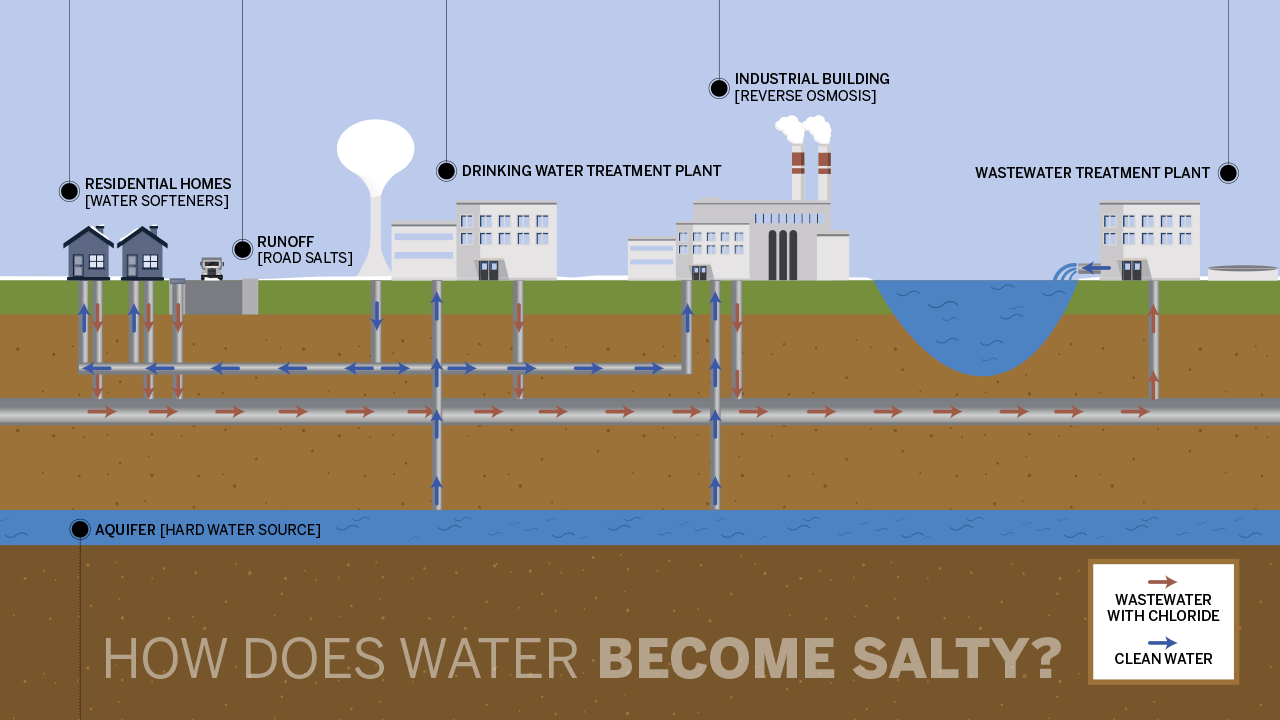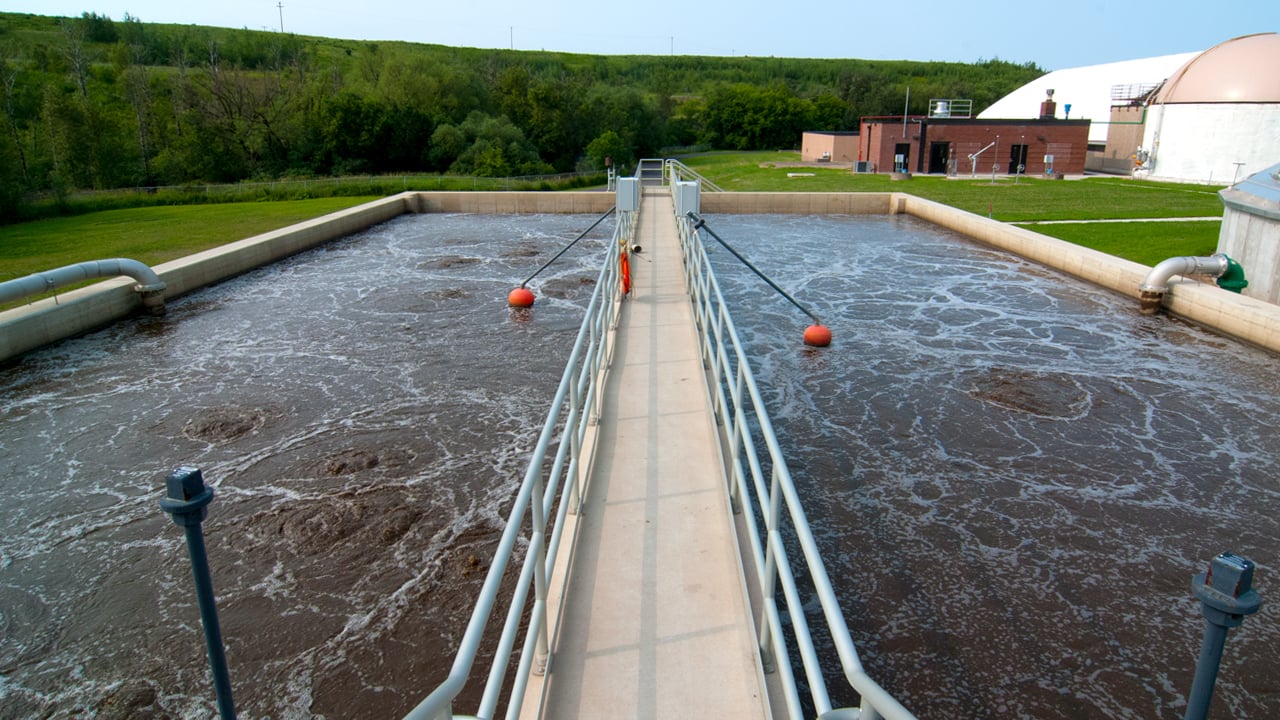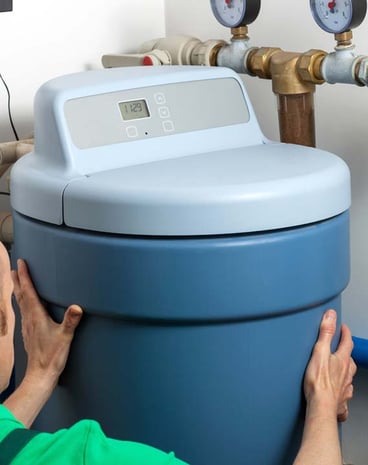The Clean Water Act requires the Environmental Protection Agency (EPA) to develop criteria to protect surface water, and they have created water quality standards to safeguard our water resources from excessive chloride. Everyone will have to comply with these standards.
Many states have started to regulate chloride in our surface waters. In many cases, states are giving communities time to make progress towards chloride reduction in their wastewater discharge by issuing variances. But regulations change often, so municipalities must know how to comply – and if they’re not yet required, what should communities consider as new regulations approach?
High concentrations of chlorides are toxic to fish, invertebrates, and some plant species. The chlorides are regulated by state pollution control agencies through several parameters.
How do chlorides enter our water system?

When communities receive their water from a hard water source, it has to be treated. The waste stream produced when softening the water is high in chloride content. After softening, it is sent to the wastewater treatment facility.
Sometimes, when treated wastewater is discharged from municipal or industrial facilities, it can elevate the salinity in the receiving water. The salt levels rise mainly due to a high concentration of chlorides. There are primarily two ways chlorides can affect water quality standards:
1. Chlorides entering the plant – this is when sources of salt contribute to the influent of a wastewater treatment plant. These sources can include things like:
- Residential water softeners that are not properly tuned discharging elevated levels of salt.
- Industrial processes with water treatment processes that concentrate chlorides.
- Municipal water treatment processes with reverse osmosis that generate a brine waste stream.
- Combined sanitary sewer systems where road salt from runoff enters the system.
2. Receiving water sensitivity – the sensitivity of the waterbody plays a role in how much salinity it can withstand. Chloride limits are based on the maximum amount allowed to enter a waterbody so that it will continue to meet water quality standards.
My community’s water has excessive chlorides, now what?
According to Dave Quast, SEH wastewater engineer, if a community has a high chloride concentration and the wastewater facility discharges to a sensitive receiving water, they will be required to take corrective actions. “The strategy a community chooses depends on the source of the chlorides. Some wastewater facilities have a significant industrial chloride contribution; others may receive 70% of the chlorides from inefficient water softeners,” Quast says. “After years of study, scientists have confirmed that it impairs aquatic life."
A three-part plan can help your community deal with and prepare for mitigating salty discharge.
Part 1: Monitor the chloride concentrations.
Impacted communities are often required by the state to monitor their wastewater discharge for chloride. This differs from state to state. In Minnesota, the Pollution Control Agency requires this for facilities that discharge to a receiving water sensitive to chlorides.
Part 2: Evaluate the source of the chloride coming into your facility.
Through testing, monitoring, and inspections, a community can determine if the chloride is coming from home water softeners, industries, stormwater, or other sources. Understanding where the chloride originates is important so you can spend your efforts and resources on finding the most cost-effective solution. Think carefully about how and where you monitor, as chloride sources can vary day-to-day and hour-to-hour.
Part 3: Develop an affordable solution.
Each community is unique in its salty parameter sources – so the solutions must be tailored to each specific circumstance. There are several strategies for developing affordable solutions that include the following:
Short-term solutions:
- Switch to high water softeners (4,000 grains per pound of salt).
- Require pretreatment at industrial facilities.
- Address any runoff issues contributing to road salts.
- Use sand and other products for deicing in the winter.
Long-term solutions:
- Improve and separate sewer systems.
- Treat for hard water at water treatment plants.
- Remove residential water softeners.
- Use water softeners only when necessary.
- Use a drinking water source that has less hardness and/or blends with existing hard water.
- Discharge your wastewater effluent to a receiving stream that is not sensitive to salty parameters.

Because removing salt from wastewater treatment facilities can be costly, preventing it from entering the sanitary sewer is a good solution to mitigate these costs.
What if my community can't afford improvements on our own?
Of course, not all these solutions will work for every community. And, in many cases, they are expensive. That is why it is important to explore funding options that may be available to your community. In many cases, long-term compliance may require plant upgrades. This makes it important to plan for these upgrades well in advance.
Recurring state grants may be available, such as MPCA’s Chloride Reduction Grants. Additionally, new funding programs are being created to help with regulatory compliance. In Minnesota for example, the Point Source Implementation Grant (PSIG) program can fund up to 80% of qualified project costs or $7 million (whichever is less) for satisfying effluent limits based on water quality. Similarly, Colorado has the Energy and Mineral Impact Assistance Fund Grant for needs pertaining to water and wastewater, but these funds may only be used by communities in areas affected by minerals and mineral fuel production.
Some of the more traditional federal programs available across the country include:
U.S. Environmental Protection Agency (EPA)
- Water Infrastructure Finance and Innovation Act (WIFIA) – federal loan program
Minnesota Public Facilities Authority
- Clean Water and Drinking Water Revolving Funds
- Low-interest loan program with principal forgiveness provisions based on community demographics such as median household income and population.
USDA Rural Development
- Loan and grant programs for eligible communities (rural) addressing wastewater and drinking water improvements.
U.S. Department of Housing & Urban Development (HUD)
- Through the Community Development Block Grant program, HUD distributes funding to states who then competitively distribute to low-income communities to address public infrastructure issues such as wastewater and drinking water.
National Rural Water Association
- A loan program designed to meet the unique needs of small water and wastewater utilities, it can fund short-term repair costs, small capital projects, or preliminary design costs associated with larger projects.
Senior professional engineer and wastewater market lead Susan Danzl notes, “Funds are available for projects that need to comply with chloride limits. However, it is necessary to thoroughly understand the funding sources, including program timing and priorities. It is also beneficial to recognize sources that can be combined with one another for additional leverage.

Aquatic life is threatened when communities discharge too much chloride into their habitat.
What are the states doing?
Since each state is managing salty discharge differently, here’s what some of them are doing.
California: On the West Coast, they are focusing on salt-based residential water softeners. Some cities have outright banned them. Others pre-soften water before it gets to the residents. And some cities are educating residents on the efficient use of softeners or promoting the use of high-efficiency models.
Virginia: On the East Coast, northern Virginia is focusing on a salt management strategy comprising winter road maintenance best practices. This includes county salt strategies incorporating training, technology, contracts, and equipment.

Residential water softeners are often a cause of salty discharge in municipal wastewater systems. The salt used for the brine can cause elevated chloride levels.
Colorado: Colorado is exploring policies regarding discharge salinity. Currently, there is policy in place for discharging into the Colorado River Basin, which drains the portion of the state west of the Continental Divide.
Iowa: 108 industrial facilities and 65 cities have chloride limits, largely concentrated in northwest Iowa. Limits have become effective for 24 of the industrial facilities and 12 of the cities.
Indiana: Indiana operates similarly to Iowa. Some cities in Indiana plan to use reverse osmosis when their water treatment plants need replacement.
Minnesota: The Minnesota Pollution Control Agency (MPCA) measures salty discharge in municipal treatment facilities. It then identifies and applies limits based on the receiving waters. If achieving compliance of the chloride standard proves too costly, the community can obtain an interim limit through a lengthy variance application process with a time schedule for compliance with the water quality standard.
Wisconsin: Wisconsin is studying the best method for compliance of chloride. Cities in Wisconsin can also apply for variances to the chloride standard. Some cities are promoting efficient water softener use with their residents and providing training workbooks for water softener setup.
Summing it up
The Clean Water Act enables the EPA to protect our environment and our water. Discharging excess chloride has negative effects on the environment, and the EPA is asking the states to develop guidelines for compliance. Every community has its own circumstances contributing to salty wastewater discharge, and there are many applicable solutions. From short-term fixes to long-term results, the answer often lies in the funding and how you secure it.
About the Authors

David Quast, PE*, is a senior operations specialist for SEH's wastewater practice in Minnesota, North Dakota, South Dakota, Iowa, Nebraska, Texas, and Virginia. He has worked tirelessly throughout his 35+ years in the wastewater industry to help communities preserve and protect the resources they rely on every day.
*Registered professional engineer in MN, MO, VA.

Susan Danzl, PE*, is a senior professional engineer with SEH. As the wastewater market lead, she understands that taking advantage of the right financing packages can help communities better tackle projects.
*Registered professional engineer in MN, CA, CO, IA, VA, NV.

.png?width=113&name=SEH_Logo_RGB%20(1).png)
